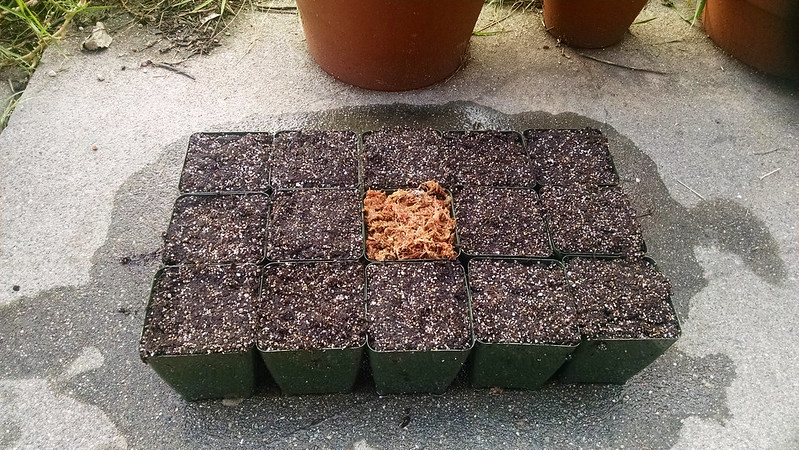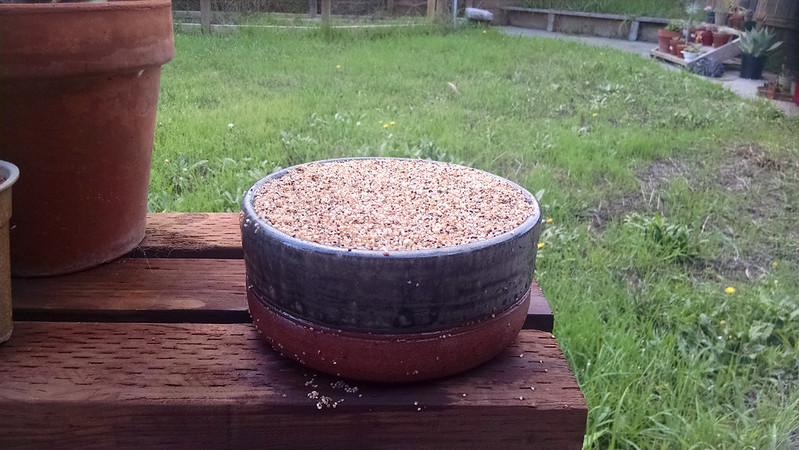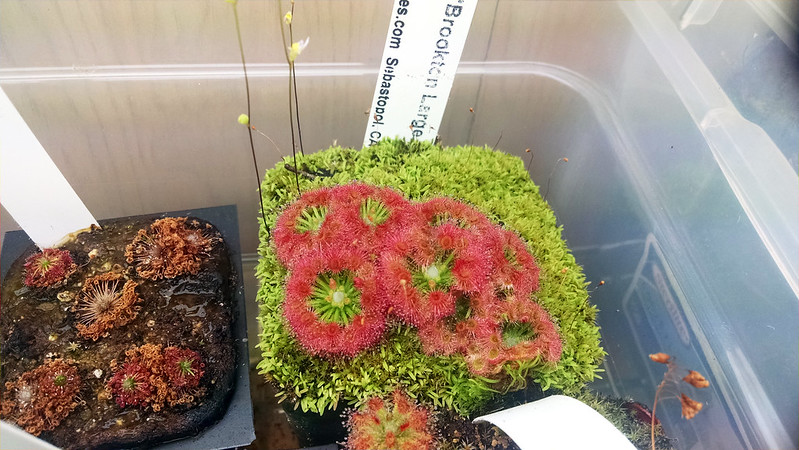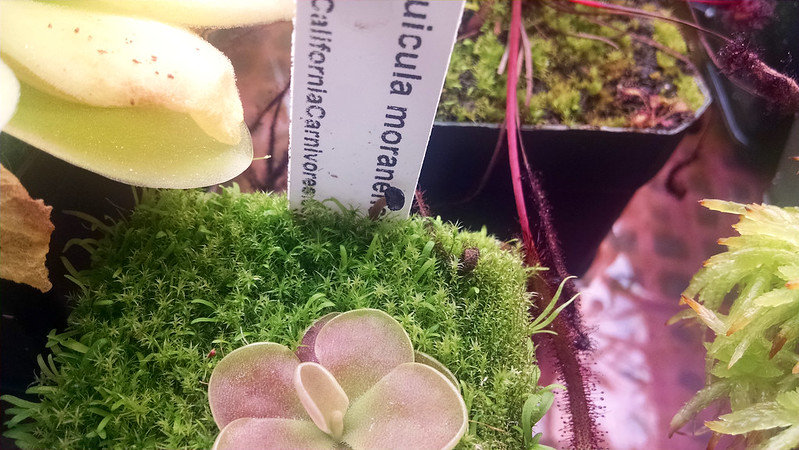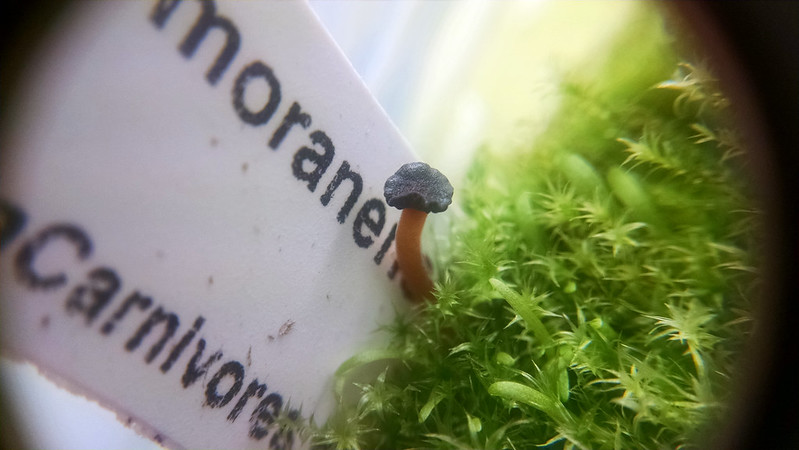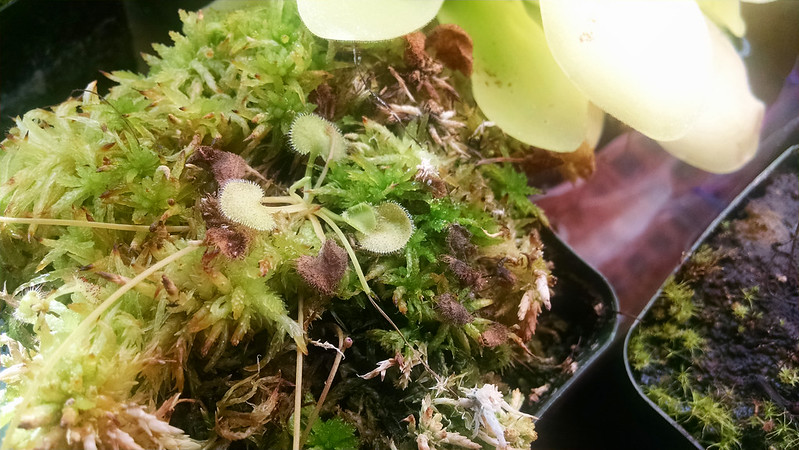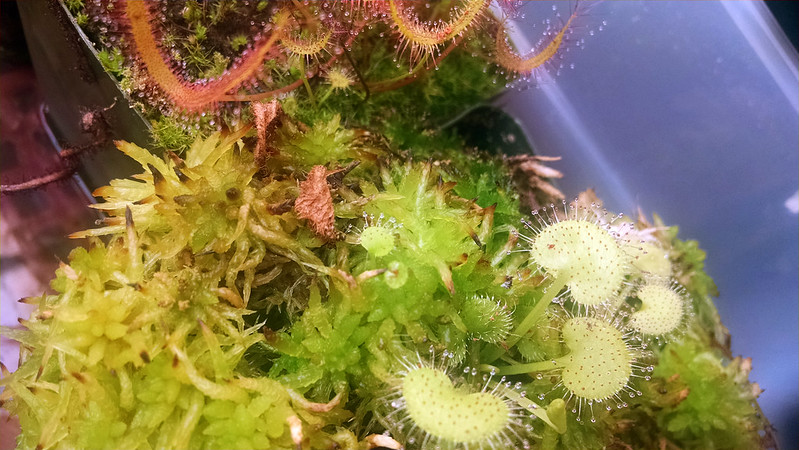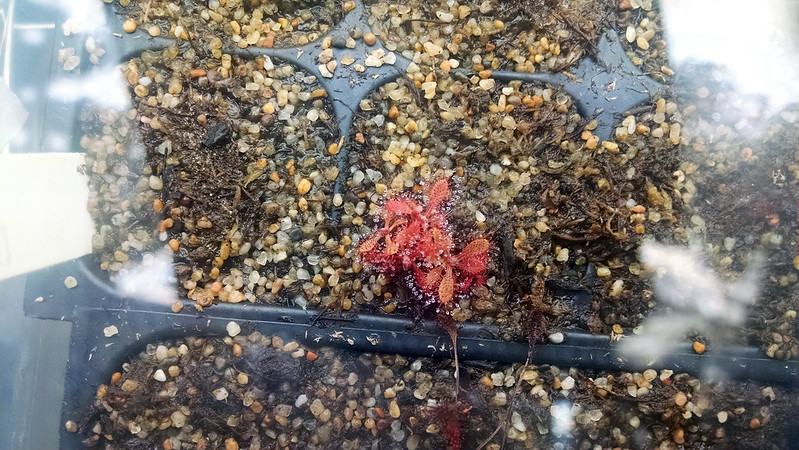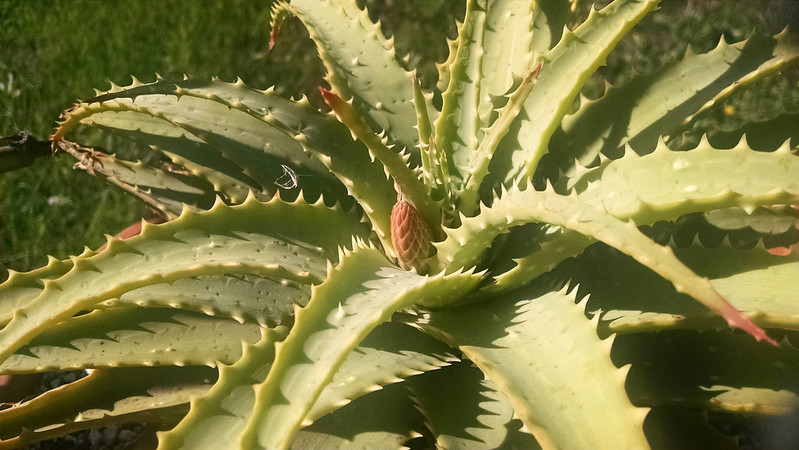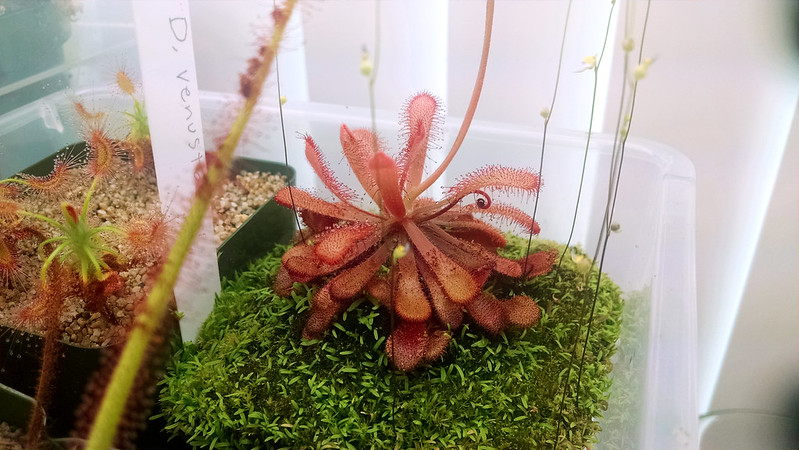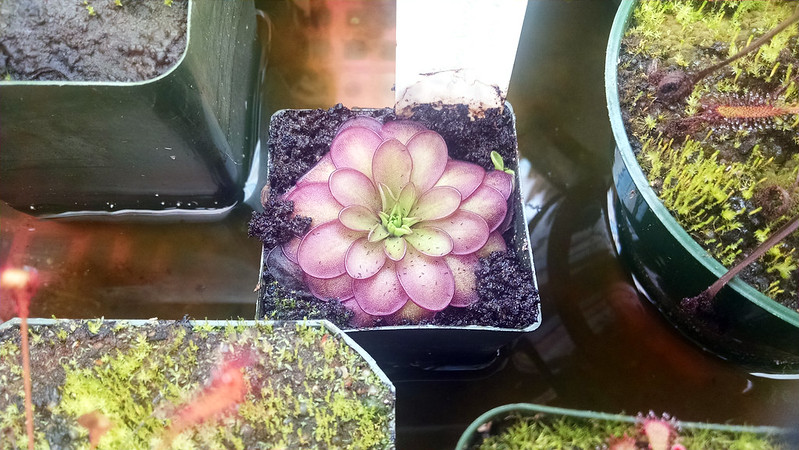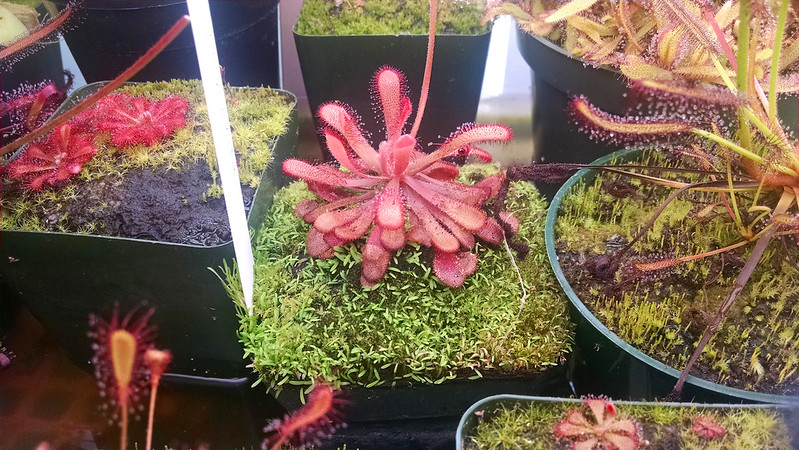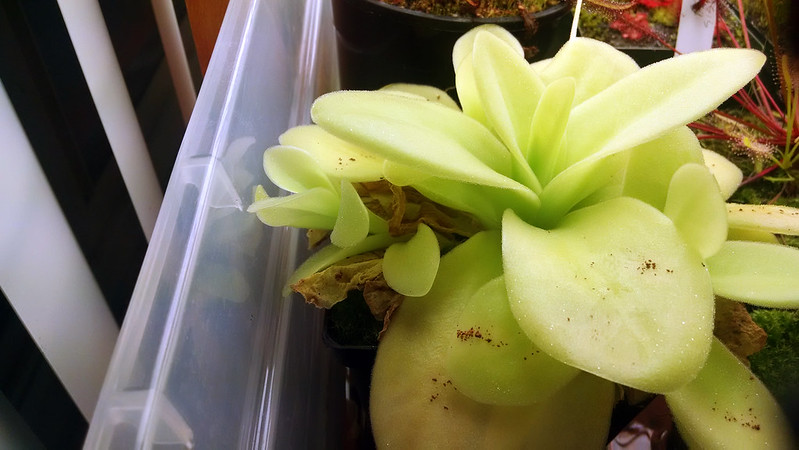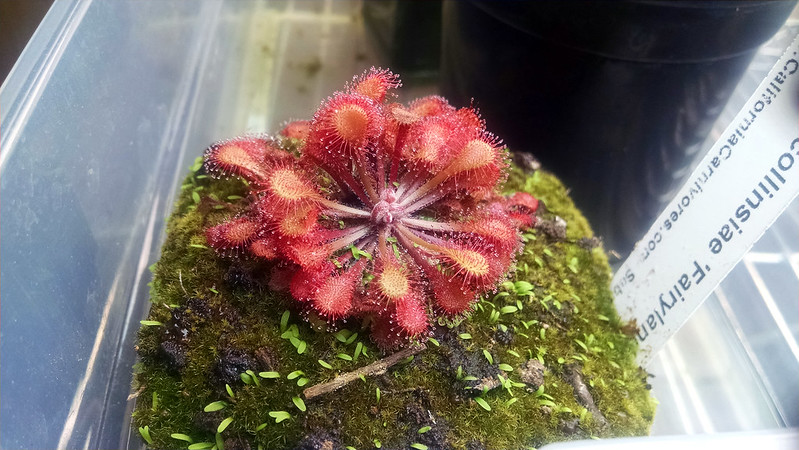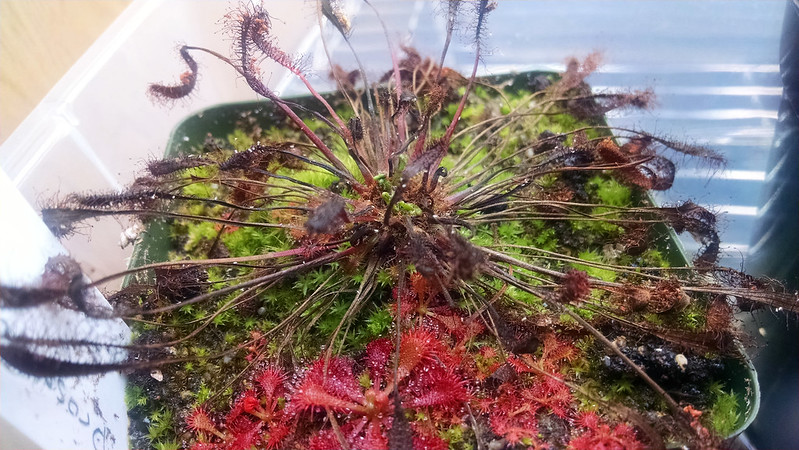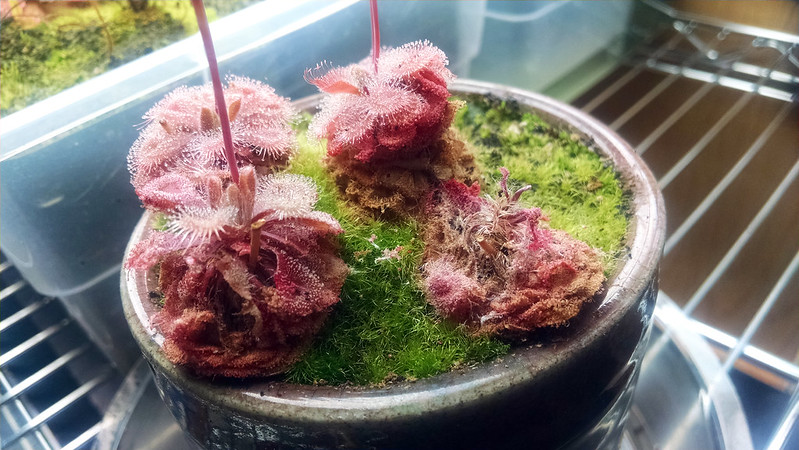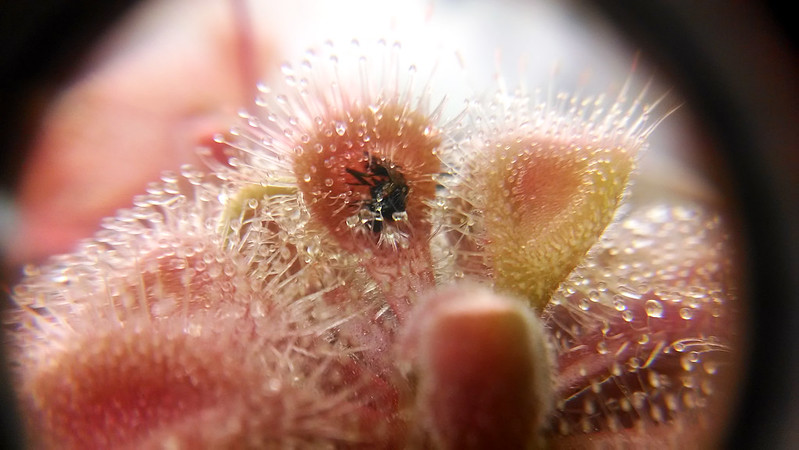I've posted several times about how much I love the
UC Botanical Garden. Another of my favorite plant destinations in the Bay Area is the
Conservatory of Flowers in Golden Gate Park. It's a big 19th century glass greenhouse that contains a stunning collection of tropical plants, including the largest
Philodendron in cultivation, a 100+ year old specimen that is the centerpiece of the Tropical Lowland room. I always forget to take a picture of the conservatory itself when I visit, but
here's a decent example from Wikimedia.
The Conservatory also hosts a delightful collection of Nepenthes. I decided to document some of my favorites on my most recent visit, since I don't feature that genus much on the blog here. One note: plants at the Conservatory aren't always labeled super well. A few of these I knew offhand, a couple I made educated guesses about, and a few are NOID. Please comment with a correction if you know more than me!
This NOID (I suspect perhaps
Nepenthes ventricosa x
alata, i.e.
N. ventrata) is what made me realize I should start taking pictures.
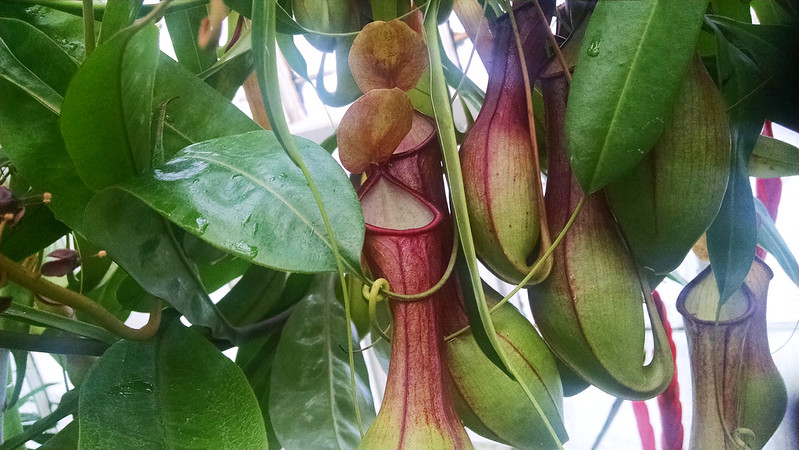 |
| Lovely coloration and pitcher shape on this plant. |
The vine was also really impressive. The average hobbyist greenhouse owner probably couldn't afford to devote this much space to one plant, but it makes for a wonderful display.
 |
| Probably 100 pitchers on this plant? Fantastic. |
These pictures are from the Aquatic Plants room, which has a large pond and hosts a lot of epiphytic species. It has lowland to intermediate conditions.
 |
| I think I had a guess about this species but I can't remember anymore. |
Some of these Neps are huge, such as the following
Nepenthes truncata and
Nepenthes rafflesiana.
 |
| These pitchers are like, 18 inches (45 cm) long. |
 |
| I love these fat pitchers. Great coloration too. |
Other are just perfectly formed, like this
Nepenthes ventricosa that's almost popped its top.
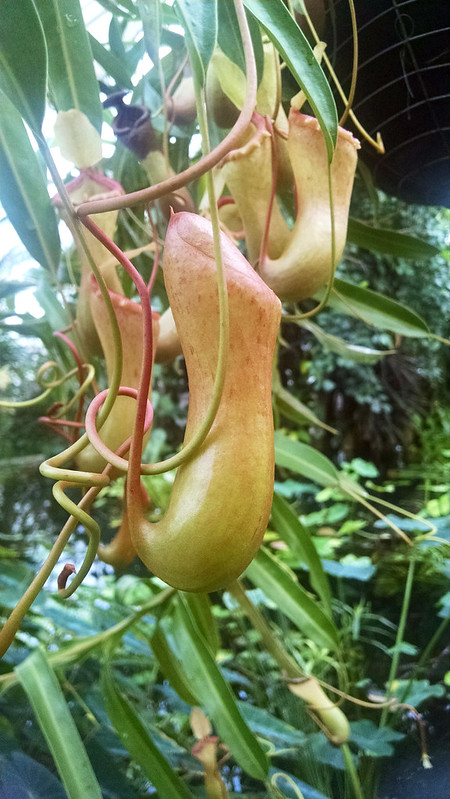 |
| It looks like it's smiling. |
Or this
Nepenthes bicalcarata, which has one of the most perfect pitchers I've ever seen.
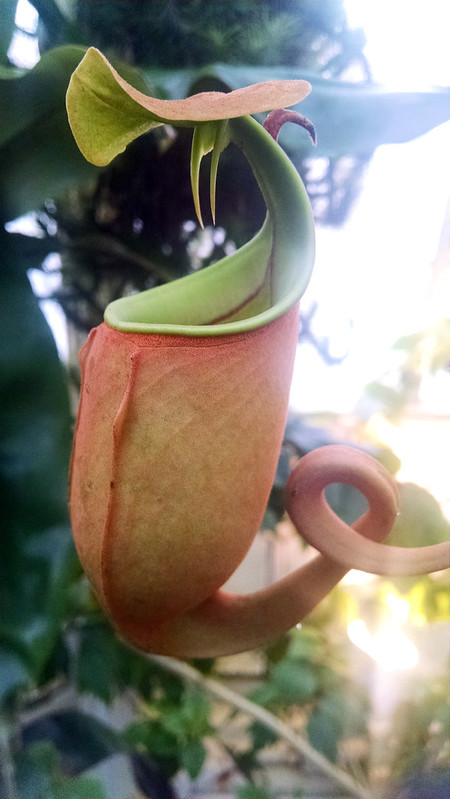 |
| Those fangs are so distinctive. Love the orange and green too. |
Bicals are the largest Nep by total mass, which is clear from this vine.
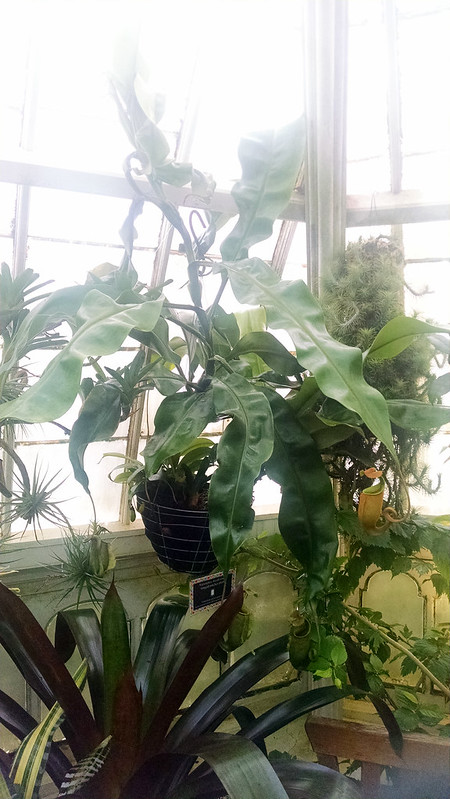 |
| This plant is like an old friend of mine I like to visit. |
The nearby Tropical Highland room hosts a couple of more delicate species, including this lovely
Nepenthes mikei and its vine.
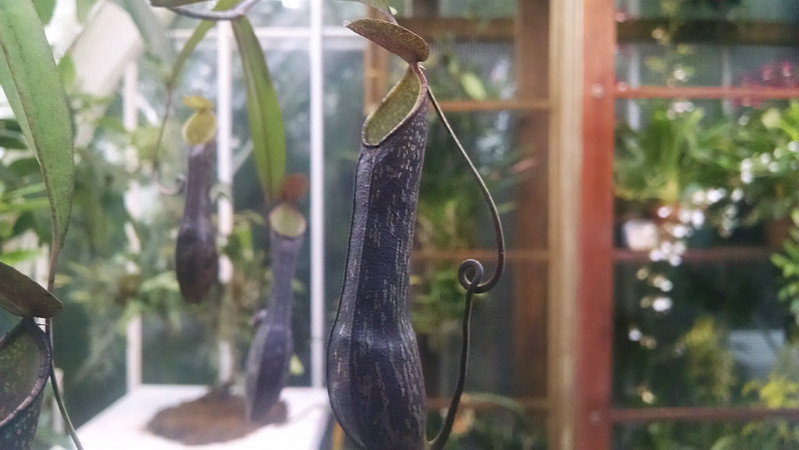 |
| These upper pitchers are so fine and delicate. |
 |
| Another great vine, although somewhat more modest than the one in the Aquatic Plants room. |
And this beautiful
Nepenthes lowii, sporting a big fat patch of crystallized nectar.
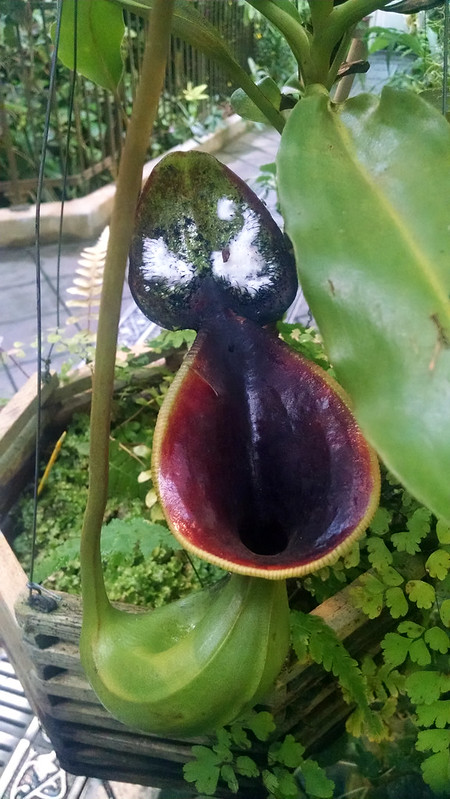 |
| That nectar patch looks so inviting. If only I were a shrew. |
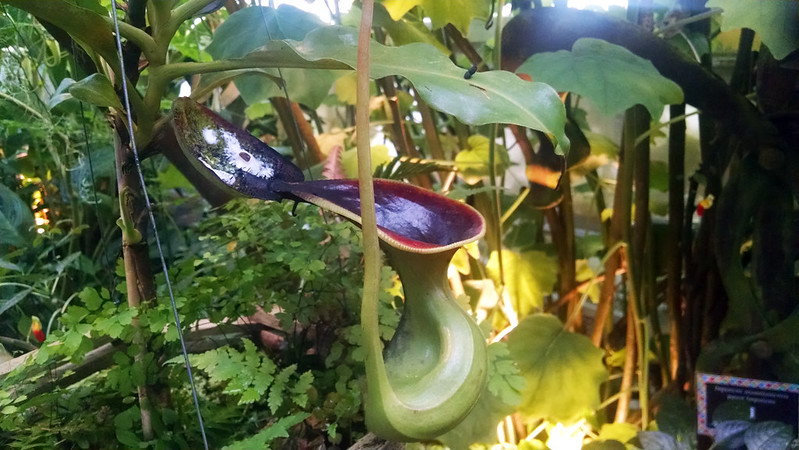 |
| N. lowii has such a distinctive shape. If I ever start growing highlanders this one is high on my list. |
A few other (non-carnivorous) plants caught my attention that day, and I couldn't not share them with the blog. Such as this insane hibiscus flower.
 |
| This is in the Potted Plants room. |
I had to include my hand for scale. The flower was enormous.
And this lovely
Paphiopedilum.
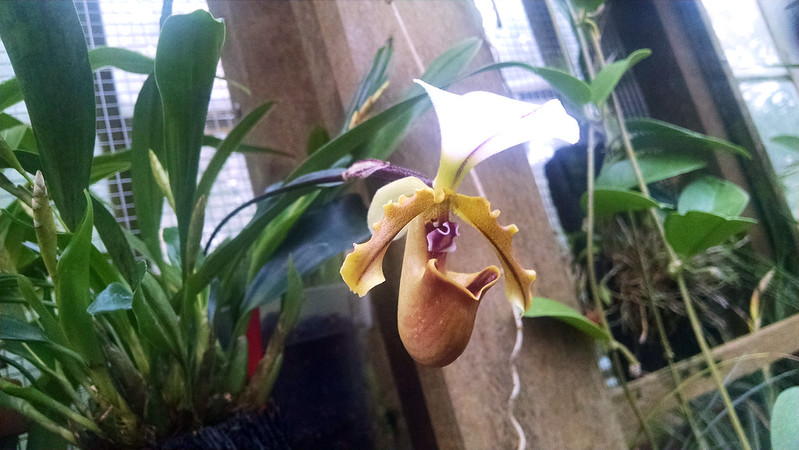 |
| I love that lantern-jawed look. |
Paphs are so funny looking.
In conclusion, the Conservatory of Flowers is super awesome. It's a fantastic place to visit if you're ever in the Bay Area, and are keen on weird plants.
 |
| The Potted Plant room is really magical. |

















